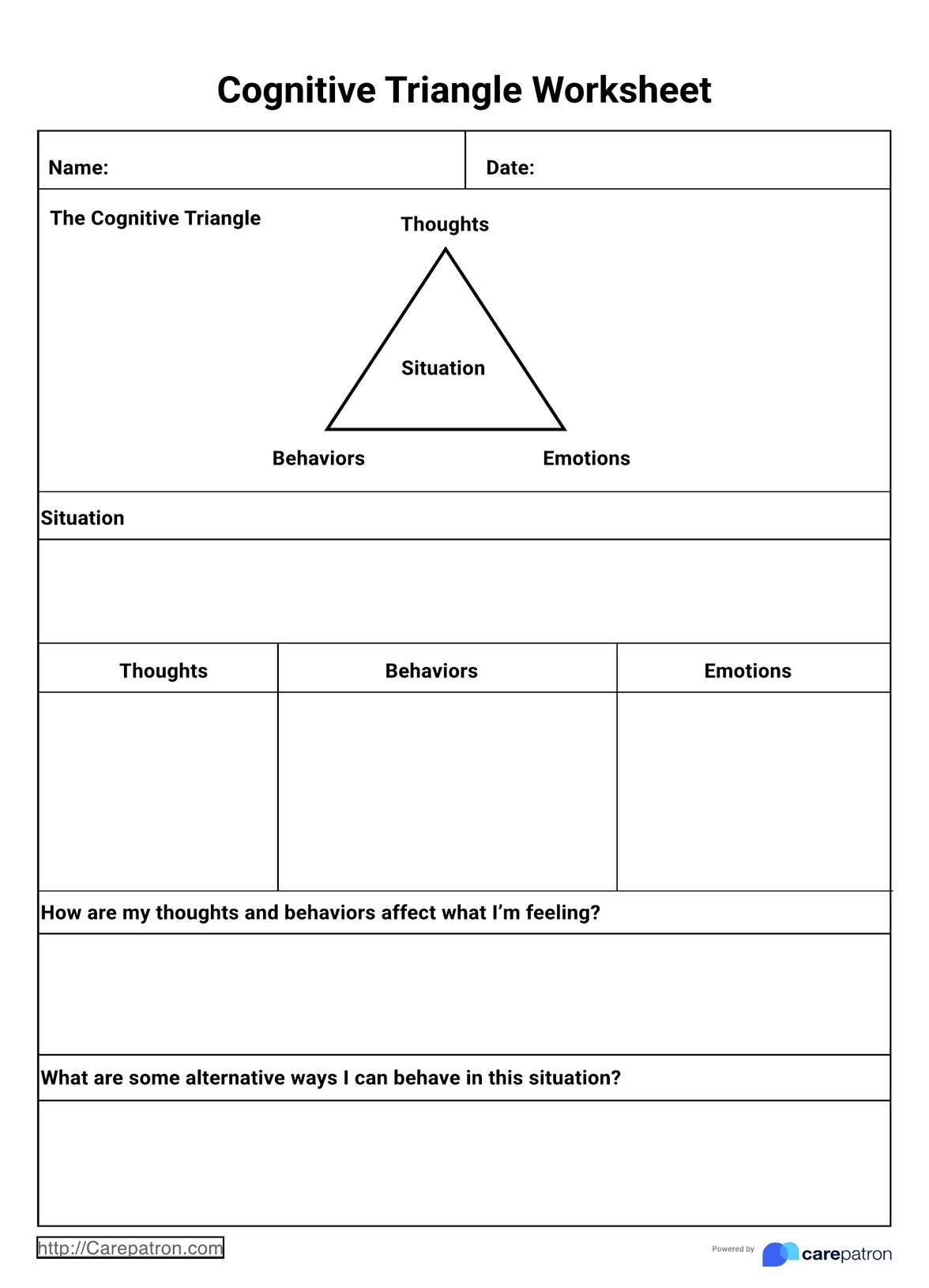Before anything, please note that worksheets are not diagnostic tools. However, they can be used on people who are suspected of having certain mental health issues. Worksheets such as this can help you identify certain traits/symptoms that are characteristic of suspected mental health issues your patient/client has, so they can at least help you gather evidence. But again, worksheets are not diagnostic tools.

Cognitive Triangle Worksheet
Use our Cognitive Triangle Worksheet to help patients work through mental health challenges by understanding their thoughts, feelings, and behaviors better.
Use Template
Cognitive Triangle Worksheet Template
Commonly asked questions
Practitioners should use a cognitive triangle worksheet to gain insight into a patient's thinking patterns and behavioral responses. It can also be used as an educational tool.
Cognitive behavioral therapists are usually the mental healthcare professionals who use this, but it can also be used by adjacent professionals like counselors, social workers, and psychiatrists, so long as they are familiar with CBT concepts.
EHR and practice management software
Get started for free
*No credit card required
Free
$0/usd
Unlimited clients
Telehealth
1GB of storage
Client portal text
Automated billing and online payments











